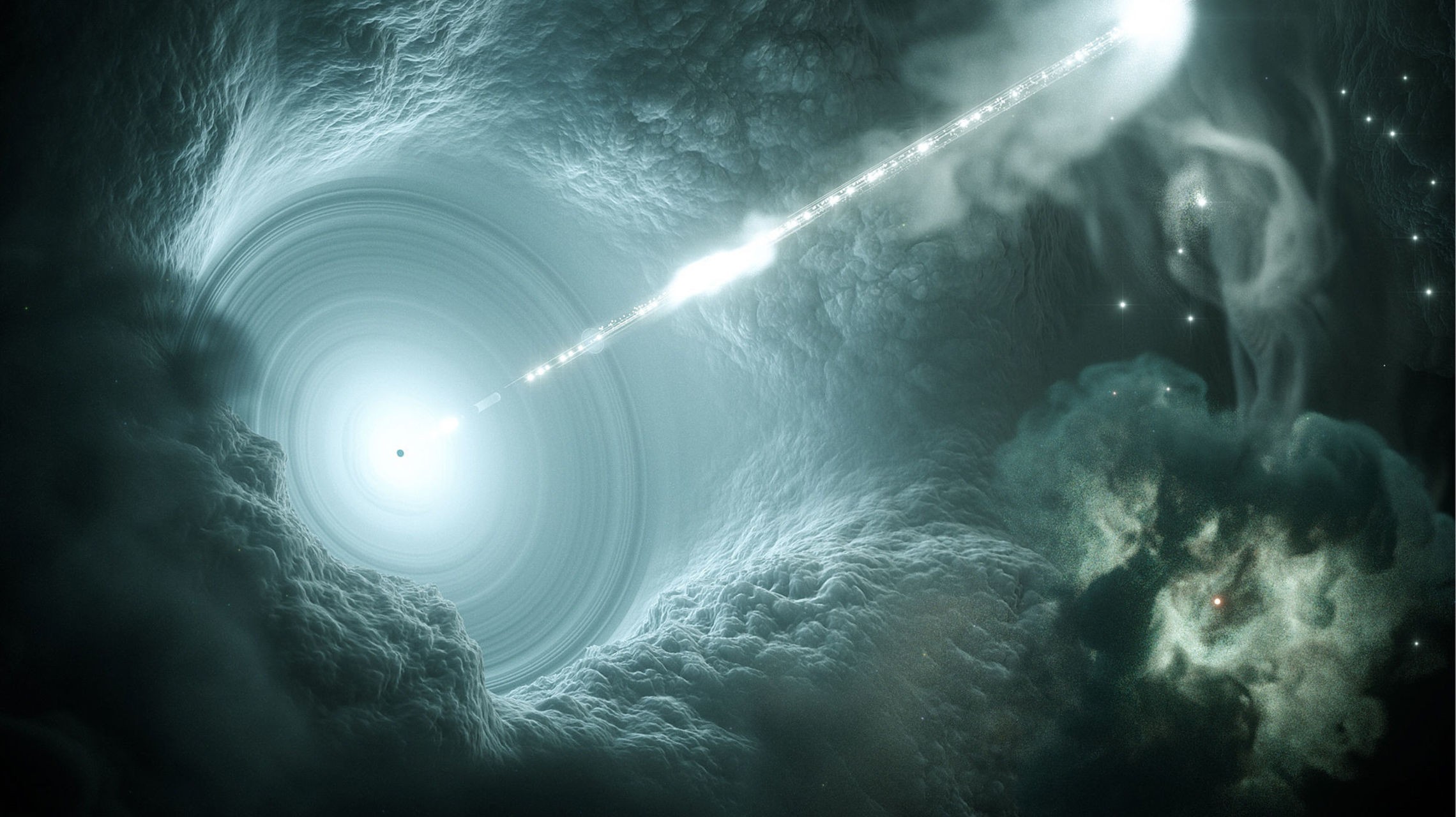A team of astronomers announces that they have captured the radio signal of a quasar evolving just 780 million years after the Big Bang. It is the most distant object of its type ever discovered to date.
A quasar is a very energetic galaxy with a supermassive black hole at its center that ingests a lot of matter. The object then emits a lot of energy in the form of electromagnetic radiation (radio, IR, visible, UV, X) and, in fact, appears very bright. Quasars are thus presented as "light versions" of black holes. They are among the brightest objects in the universe.
What astronomers from the European Southern Observatory (Chile) and the Max Planck Institute for Astronomy in Germany are announcing today is the discovery of the quasar the furthest known to date (and therefore the oldest). Details of their study are published in The Astrophysical Journal.
This object was spotted using Magellan telescopes at the Las Campanas Observatory in Chile. The researchers observed the telltale radio signature left behind by powerful jets of particles emerging from above and below the black hole.
Known as P172+18, researchers have indeed observed it as it was when the Universe had only 780 million years , approximately 5% of his current age . According to the analyses, this quasar then hosted a supermassive black hole whose mass is equivalent to that of more than 300 million suns .
This relic reveals clues to one of the darkest periods in history:the age of Reionization .
In those times, the universe was darkly veiled by an essentially uniform cloud of hydrogen gas. The light emitted was then very quickly absorbed by the neutrally charged gas. Eventually gravity collapsed this primordial gas to form the first stars and quasars which began to heat and ionize the surrounding gases, eventually allowing light to pass through. " And there was light ! sort of.

At this time, it is still unknown how these black holes could have become so massive so early in the universe.
The most commonly accepted formation process normally involves the collapse of a massive star at the end of his life. By collecting matter, these objects can then transform into supermassive black holes. However, to obtain such objects, the "time factor" is essential. Also, to get so big in such a short time, quasars in the early universe must have gained mass by other means.
A second option would possibly involve large amounts of cold, primordial hydrogen gas collapsing directly into a black hole . Since this mechanism does not require stars as "raw material", it is the only one that would allow this object to grow so much in such a short time. For now, however, the question remains open.
Also note that this black hole's "feeding frenzy" may not have lasted very long. By comparing their most recent observations with those of a study of the sky carried out more than two decades earlier, the astronomers have indeed noticed that the quasar had lost half of its luminosity . In other words, at the time of the observations, the object may already be reaching the last stages of its life.